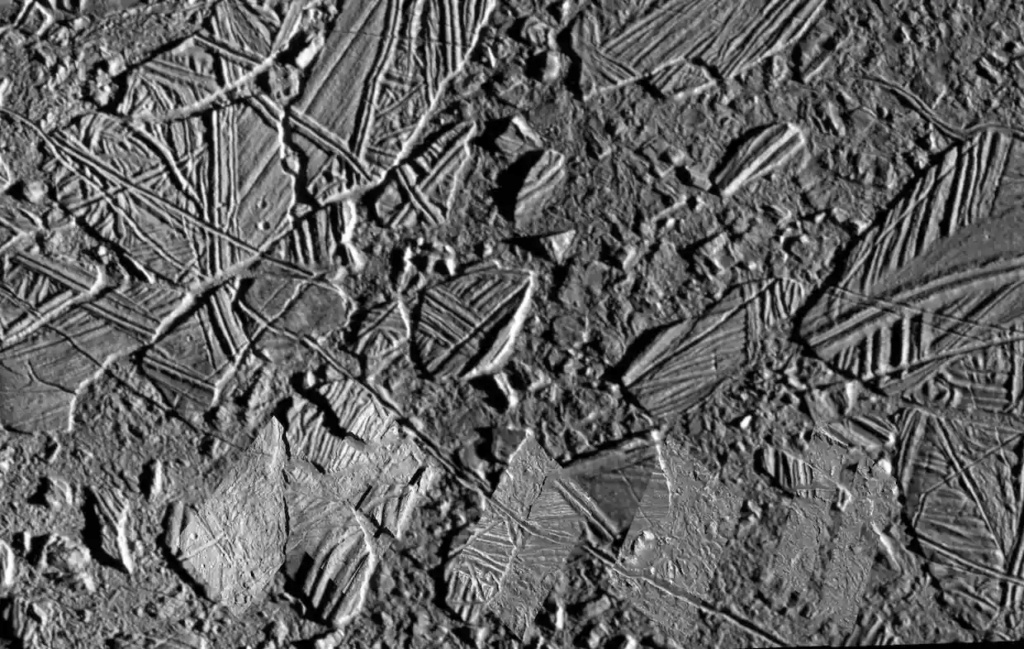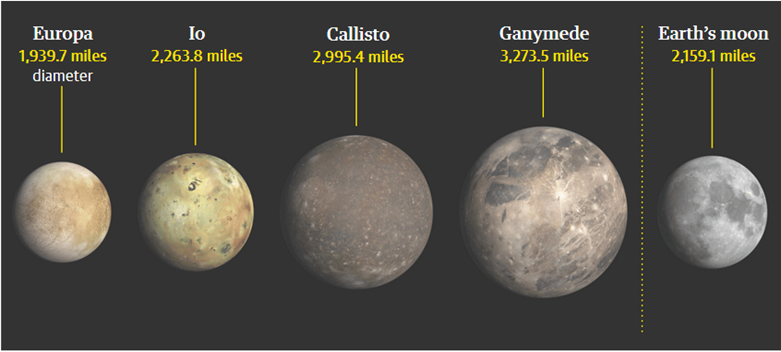?Europe: what if extraterrestrial life was hiding on the moons of Jupiter

The moon Europa would harbor many pockets of water under its icy surface. This configuration makes it the ideal candidate in the search for extraterrestrial life...
Could Jupiter's moon harbor life? The question is very serious and brought back to the fore: researchers have shown that Europa could harbor dynamic pockets of water under the surface of its ice crust.
Europa is similar in size to our Moon, but its composition is very different. Its interior is rocky and surrounded by an ocean. The whole is covered with a thick layer of ice with a depth of 20 to 30 kilometers. This layer has long been considered a barrier, making it difficult to drill. But recently, a team of scientists showed that this barrier could in fact be a dynamic and habitable system!

?Life in Europe
It was while studying the effects of global warming on the Greenland ice cap that they spotted a double-ridged ridge, reminiscent of the ridges on the surface of Europe. 'We were working on something totally different, related to climate change and its impact on the surface of Greenland, when we saw these tiny double ridges - and we could see the ridges change from 'unformed' to 'formed' “ , testifies the researcher Dustin Schroeder in a press release.

Europa is covered in double ice ridges like in this image. The furrows discovered in Greenland during NASA's IceBridge mission are analogous to these ice ripples. Could their formation on Earth be similar on Europa? Credits: NASA.
Here's how the double ridges could be formed over Europa, by the action of shallow water pockets that freeze and push the surface ice. In the middle, the subsidence of the weakened ice forms the furrow between the two crests. Credits: Justice Blaine Wainwright.

In Greenland, the double 'M'-shaped ridge formed when groundwater froze and pushed the ice up. "If the mechanism we see in Greenland is how these things happen on Europa, that suggests there's water everywhere."
Instead of being inert, Europa's ice shell would undergo geological and hydrological processes constantly reshaping its landscape – and its interior. This dynamic mechanism is favorable to life: it facilitates exchanges between the ocean under the ice and the nutrients deposited on the surface by neighboring celestial bodies.
This Stanford University video shows the process by which ridges form in Greenland.Credit: Stanford university.
Source: websites

